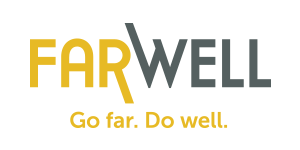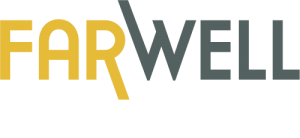Discover advisor articles and other FarWell resources.
Go far. Do well. Call (800) 987-2015
Culture is Critical | How to make work culture a part of leadership decisions.

FarWell Celebrates ‘Best Places to Work,’ Inc. 5000 2018 Awards
September 19, 2018
Change Management | 5 Essentials of Change Leadership
November 7, 2018“67% of U.S. workers are disengaged. Worldwide that number rises to 85%.”
– The Employee App: State of the American Workplace Report
– Gallup: State of the Global Workplace Report
Culture is critical, timeless and evolving.
Culture defines everything about how we live and work together. It is so much a part of our world that we often don’t notice its innate qualities. A culture defines who is in “the group” and who is “outside the group.” It provides a sense of belonging. Culture defines our relationships and how we treat others, both inside and outside the culture group. It brings us together to form cohesive, loyal working groups to successfully meet our needs. It defines our roles and the benefits we can expect from them.
Who we trust, and distrust is a part of our culture. Culture defines the rules by which we live and allows for their enforcement. It defines how decisions are made and how conflicts are resolved. Ultimately, culture provides us with a reliable definition of our social environment that we crave as biological humans.
Relevance of Work Culture Discussions
In recent years, work culture is an increasingly common topic. Its evolution parallels that of the evolution of how people work. Humans have moved through chiefdoms, strict hierarchies, and meritocracies. But now most organizations are evolving into more collaborative cultures. The need to make that transition, and the challenges it presents, are topics for both new and old organizations.
The reality is that large numbers of people feel disengaged from their work and they are looking for something more. According to Gallup, 67% of U.S. workers are disengaged and worldwide that number rises to 85%. People aren’t just looking for flextime and company picnics, they are looking for a deep sense of purpose in their work. That is what is truly energizing and fulfilling. The current generation saw their parents work hard at jobs that were not inspiring with retirement as their only goal. They saw people used as machines rather than intellectual resources. Younger workers and those coming up expect more. They want to be a part of the vision. To get there, the culture of the workplace needs to change.
Changing work culture isn’t easy. It means changing the values and beliefs, which are very deep-seated in humans. Besides, most of the leaders of organizations are from prior generations and have grown up with past assumptions about the role of leaders and how organizations should operate. Changing a work culture requires understanding people and their motivations, and it requires understanding that an organization is like a living organism that grows, reacts to stimuli, and changes. This is not something that was emphasized in MBA courses 20 years ago.
The interesting thing about culture is its myriad of outward and inward influences. Internally, everyone who is part of the organization influences the culture in, at least, a small way. Each person who joins a team or organization inserts a little of their cultural expectations onto the whole. Even individual performers impact those around them through their personality and values. A front-line manager can influence the culture within their team to either be more or less positive than the organizational culture. They can exhibit good leadership and develop a team that is built on caring, collaboration, trust, and excellence. This not only changes the culture for the people on that small team, but it can also influence the culture of other teams as the members of that team interact with them.
Good leaders can spread a positive work culture and bad leaders can spread a negative work culture. Thus, positive, value-aligned leadership at all levels is essential to establishing a positive work culture.
Timeliness of Work Culture Discussions
Culture change discussions are being driven by changes in the macro business climate. Businesses are recognizing what is happening to the world around them, and they are looking for ways to survive and thrive in a rapidly changing environment. They are seeing the need to operate in a global marketplace. Mega corporations are taking over and driving markets in some industries. Technology is moving so fast that organizations have a hard time keeping up. Even our security and governmental law capabilities are being challenged by the open internet and by “living in the cloud.”
With the baby boomers approaching retirement, there are fewer workers in all sectors. Organizations will need to compete to attract and retain the best workers. Within the technology sector, businesses need the educated employees to build, maintain, and use their systems. People will have options and will choose to leave organizations that don’t have a work culture that meets their needs.
Communication is instantaneous in our world and customers now expect immediate information and service.
The internet and social media can be a boon to businesses, but it can also ruin reputations in the blink of a Tweet. Throughout our world, companies are seeking a culture that helps them compete in a world where information and communication is paramount.
The culture outside of an organization is also evolving. What were once strict cultural beliefs are now totally outmoded. Seventy-years ago, a woman wouldn’t leave the house without a hat and gloves, and a man would always wear a formal hat. Today, people wear jeans and T-shirts to formal restaurants. We have also changed our cultural tenets around marriage and divorce, smoking, birth control, race, women in careers, etc.
This cultural evolution isn’t going to stop as we become a more global society.
Cultural influences from other parts of the world will meld into the U.S. culture through travel and communication. These external influences will impact organizations even more than they do now because employees won’t stop bringing their culture to work. Instead, organizations must adjust and remain relevant to compete.
Watching the Balance Sheet
The focus of this article so far has been on developing culture and on meeting the needs of the members of the tribe. But that tribe doesn’t exist in a vacuum, it exists to serve an organization’s purpose. And organizations, whether for-profit or non-profit, exist to provide a product or service.
The organizational culture needs to support the overall organizational vision to deliver what the customers or users need. This should be a main consideration when developing a work culture. Why does the organization exist and what needs will it satisfy?
Definition of needs should go beyond the obvious function of the product or service and dig into the emotional tie to basic needs. For example, selling a new, quality roof isn’t just to keep the weather out, it is to provide long-term protection and security for your family. Expanding this definition helps both customers and employees be engaged on an emotional level.
The culture of an organization must also facilitate the organization’s ability to compete in the marketplace. Culture should be structured to support the pace and quality of delivery needed to be competitive. Markets are very competitive and trying to do more with less sometimes creates an organizational culture that pushes employees beyond what they are willing or able to provide.
For example, there are plenty of companies with negative work cultures where mistakes are not tolerated, and questions or suggestions are not appreciated. There is no consideration for people’s needs and family responsibilities. Trust is low and so is employee engagement. This tactic might work in the short-term, but it will likely fail in the long-term.
Culture and Leadership Transformation Leadership Takeaway
Evaluate the impact leadership decisions could have on your culture.
Leaders are constantly challenged with decisions on how to keep a business viable in competitive markets. When making those decisions, culture should be one of the topics on the list. Decisions should be evaluated for the impact they will have on the organization’s work culture and if that impact is acceptable.
If a change is needed, leadership can retain credibility by including employees in the process and communicating the situation, the decision-making process, and the change required. It is culture that binds people together into caring, cohesive units to achieve the goals to meet their needs. Organizations that draw upon a positive work culture will be more resilient and will gain loyalty from both employees and customers.
For more information on leading successful change, call FarWell at (800) 987-2015.
The FarWell team specializes in cultural and leadership transformation, portfolio/program/project management, and process optimization and improvement with organizations looking to thrive in their ever-changing industries.
Watch our Change Navigator Video to learn how FarWell can help you implement governance practices that help your projects succeed or email us to schedule a free discovery meeting.




